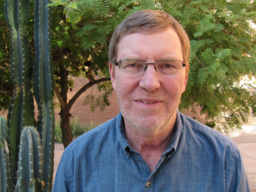Prof. Ralph V. Chamberlin
Location
Physics : 401
Date & Time
May 9, 2019, 3:00 pm – 5:00 pm
Description
Testing Statistical Mechanics Using Computer Simulations
Ralph V. Chamberlin, Department of Physics, Arizona State University, Tempe, AZ 85287-1504Abstract:
The first molecular dynamics simulations using a digital computer tested whether point-like particles obeying classical mechanics would reach thermal equilibrium if connected by anharmonic springs. To the surprise of Enrico Fermi and his team, these simulations showed no indication of the stable equipartition of energy expected for classical systems in the canonical ensemble. Now it is known that the failure to reach thermal-equilibrium average behavior is a consequence of simulating systems that are too small. We have extended Fermi’s original goal to test the statistical mechanics of small systems inside much larger simulations. We find that small systems of 1-6912 atoms show excellent agreement with the expected equipartition theorem for the average energies, but not with the dynamics. For example, the potential energy in a standard model of crystalline nitromethane has an effective local temperature for equilibrium fluctuations that is 3 to 55 times hotter than the temperature for the averages. We use energy correlations as a function of time and distance to investigate the source of excess fluctuations. We find a simple model that yields good agreement with the observed fluctuations, but only if Boltzmann’s factor is modified to exclude the energy from anharmonic interactions. Evidence will be presented for a related nonlinear correction to Boltzmann’s factor in Monte Carlo simulations, and experiments.Brief biography:
Ralph Chamberlin received his undergraduate degree in physics from the University of Utah, working with Orest Symko. He received his PhD in 1984 from the University of California, Los Angeles, working with Ray Orbach. He spent two years as a post-doc at the University of Pennsylvania working with Paul Chaikin. He joined Arizona State University in 1986. His career has shifted between experiments, theory, and computer simulations. He has been involved in developing and interpreting stretched-exponential relaxation for spin glasses, non-resonant spectral hole burning for supercooled liquids, and nanothermodynamics for the thermal and dynamics properties of complex systems on the scale of nanometers.
